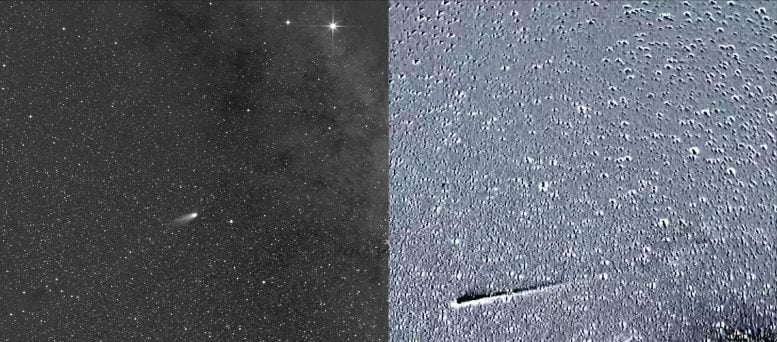
Two Sun-observing spacecraft captured views of Comet Leonard. Credit: ESA/NASA/NRL/SoloHI/Guillermo Stenborg
When Comet Leonard, a mass of space dust, rock, and ice about a half-mile (1 kilometer) wide, makes its closest pass of the Sun on January 3, 2022, it will be a journey 40,000 years in the making. Ahead of its close pass, two Sun-observing spacecraft captured these views of the comet.
The animated image below was captured by NASA’s Solar Terrestrial Relations Observatory-A spacecraft, SECCHI/HI-2 telescope, which has watched the comet since early November. This animated “difference image” was created by subtracting the current frame from the previous frame to highlight differences between them. Difference images are useful for seeing subtle changes in Leonard’s ion tail (the trail of ionized gases streaming from the comet’s body, or nucleus), which becomes longer and brighter toward the end of the clip.
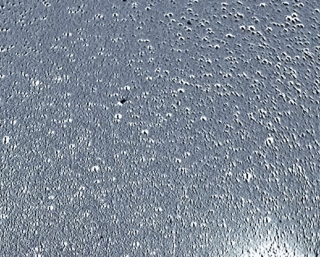
Difference image, which highlights subtle changes in comet Leonard’s tail over two frames, captured by the HI-2 telescope aboard NASA’s STEREO-A spacecraft. Credit: NASA/NRL/Karl Battams
The video below, captured between December 17-19, 2021 by the Solar Orbiter Heliospheric Imager (SoloHI) aboard the ESA/NASA Solar Orbiter spacecraft, shows Comet Leonard streaking diagonally across the field of view with the Milky Way in the background. Venus and Mercury are also visible in the top right, Venus appearing brighter and moving from left to right. During this sequence, Solar Orbiter moves toward a sidelong view of the comet, revealing more of its tail. SoloHI will continue observing the comet until it leaves its field of view on December 22, 2021.
Comet Leonard was discovered in January 2021 by Gregory Leonard, who spotted it in images taken from the Mt. Lemmon Observatory in Arizona. Its closest pass on January 3, 2022 will take it within 56 million miles (90 million kilometers) of the Sun, slightly more than half Earth’s distance. If it doesn’t disintegrate, its trajectory will fling it into interstellar space, never to return.

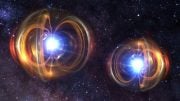




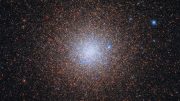
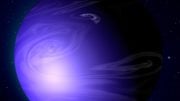

Be the first to comment on "Stunning Views of Comet Leonard Captured From Two Sun-Watching Spacecraft"